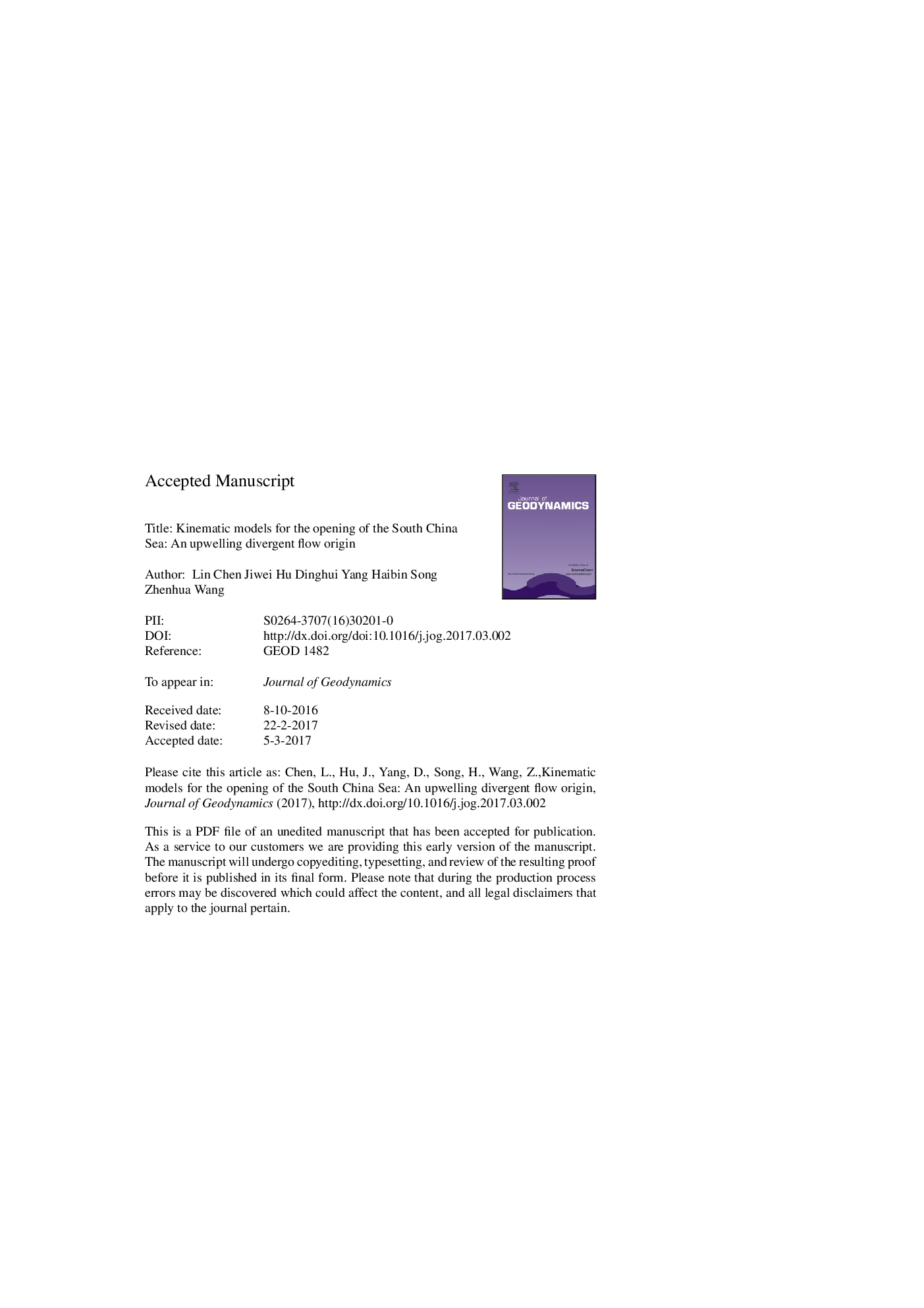| Article ID | Journal | Published Year | Pages | File Type |
|---|---|---|---|---|
| 5781214 | Journal of Geodynamics | 2017 | 59 Pages |
Abstract
We investigate the kinematics of continent breakup and seafloor spreading in response to the upwelling divergent mantle flow using the optimal nearly-analytical discrete method. Modeling results show that a larger upwelling rate (Vz) in the upwelling divergent flow system favors the earlier development of continent breakup and seafloor spreading and the formation of narrow continental rifted margins and mantle exhumation; while a larger half divergent rate (Vx) favors the diffusive lithospheric thinning and the formation of wide continental rifted margins and mantle exhumation. The upwelling divergent flow-driven continent extension is strongly depth-dependent at the proximal margins, but it behaves approximately in a depth-uniform manner at the distal margins. Application of this model to the South China Sea (SCS) demonstrates that: (1) an upwelling flow operation with Vz = 0.3 cm/yr can explain the pre-spreading continent extension of the SCS between ca. 65 Ma and ca. 33 Ma; (2) the followed upwelling divergent flow with Vx = 2.5 cm/yr and Vz = 0.3 cm/yr can reproduce the seafloor spreading history at ca. 33-16 Ma in the SCS central oceanic basin; and (3) the post-16 Ma thermal cooling since the cessation of the SCS seafloor spreading contributed â¼1.2 km to the present-day bathymetry at the relict spreading ridge. The upwelling divergent flow with a high ratio of Vx/Vz was also likely responsible for the occurrence of the very wide rifted continental margins bounded the SCS. We suggest that an upwelling divergent mantle flow played a leading role in the opening of the SCS.
Related Topics
Physical Sciences and Engineering
Earth and Planetary Sciences
Earth-Surface Processes
Authors
Lin Chen, Jiwei Hu, Dinghui Yang, Haibin Song, Zhenhua Wang,
